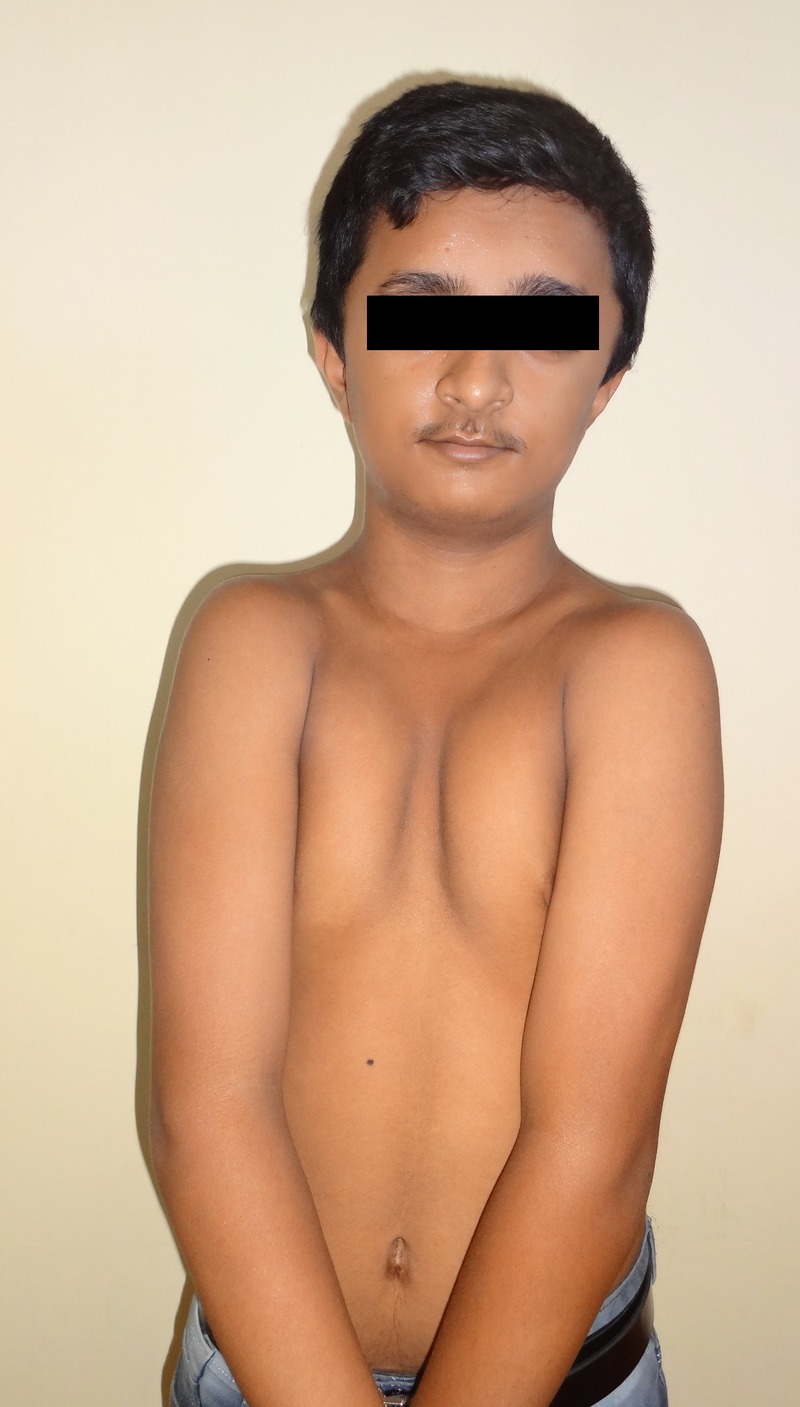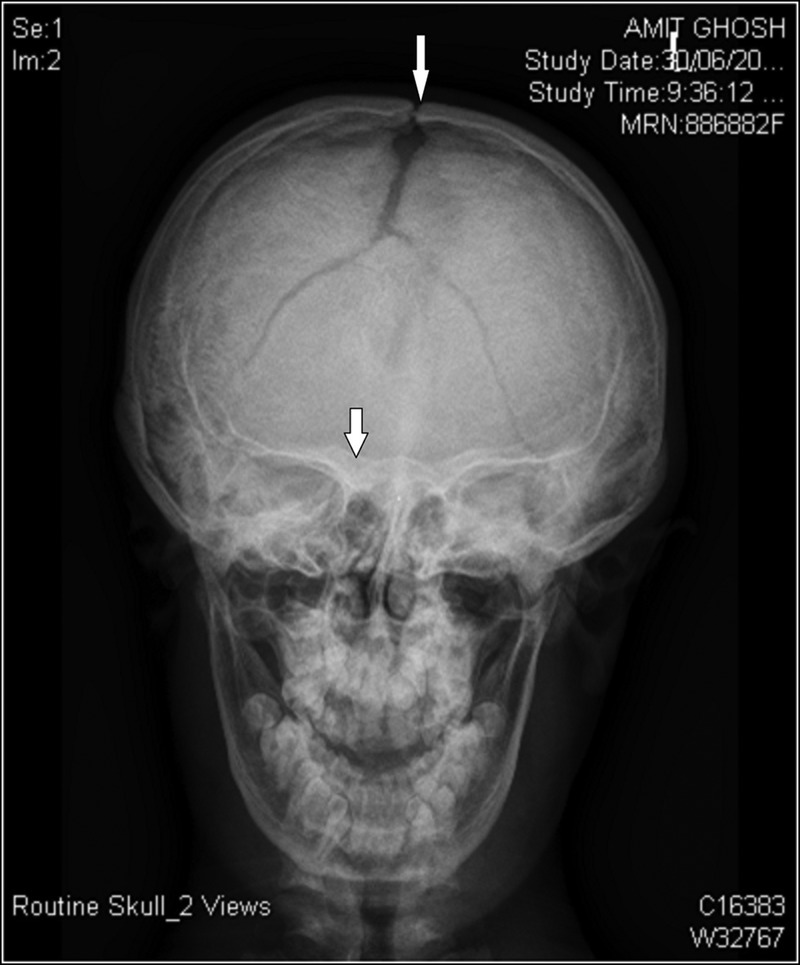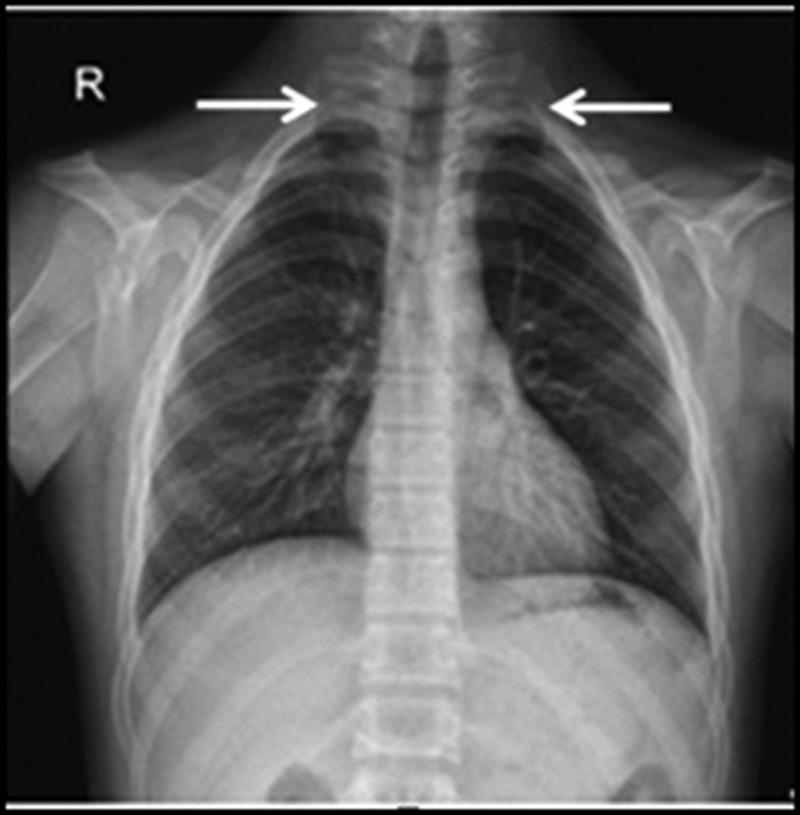Description
Cleidocranial dysostosis (CCD) is a rare autosomal-dominant skeletal disorder presenting with a variety of unique clinical and radiological features that can prove to be a diagnostic challenge.1 2A 15-year-old boy, born of non-consanguineous parents, presented with short stature, delay in eruption of permanent teeth and facial dysmorphism. On examination, his height was 155 cm at the 10th centile on Agarwal's growth chart, with a mid-parenteral height of 165.5 cm. He had a triangular face and hypertelorism with the lower part of his face being hypoplastic. Oral examination revealed persistent temporary milk teeth. The patient had normal secondary sexual characters. He was able to approximate his shoulders due to the presence of hypoplastic clavicles (figure 1). Laboratory tests showed a normal haemogram. His renal functions were normal with corrected serum calcium 9.2 mg/dL (8.3–10.4), phosphate 3.2 mg/dL (2.6–4.5), alkaline phosphatase 74 IU/dL (40–125) and 25-hydroxyvitamin D levels 38 ng/dL. X-ray of the skull was suggestive of open anterior and posterior fontanelles with hypoplastic maxillae and absent frontal sinuses (figure 2). X-ray of the chest showed hypoplastic clavicles bilaterally (figure 3). In view of the clinical and radiological presentation, a diagnosis of CCD caused by mutations in the RUNX2 gene (6p21), which is involved in osteoblast differentiation and bone formation, was made. It is known that mutations with large penetrance and significant variability are involved in CCD. However, a clear correlation is not established between the phenotype and genotype. Genetic counselling should be offered to affect families as the de novo mutations are found to be high in CCD.3
Figure 1.

Patient's image showing triangular face with hypoplastic lower half and hypertelorism, suggestive of an Arnold's face and ability to approximate the shoulders, suggestive of hypoplastic clavicles.
Figure 2.

X-ray of the skull showing persistent opening of the anterior and posterior fontanelle and absent frontal sinus.
Figure 3.

X-ray of the chest showing evidence of hypoplastic clavicles bilaterally.
Learning points.
Cleidocranial dysostosis is a benign autosomal-dominant skeletal disorder.
Hypoplastic clavicles, open fontanelles and supernumerary teeth are the clinical clues for the diagnosis.
The diagnosis can be confirmed by molecular genetic analysis in patients with atypical clinical and radiological features.
Footnotes
Contributors: RD and FKJ saw the patient and wrote the article. HSA saw the patient. NT helped in writing the article.
Competing interests: None declared.
Patient consent: Obtained.
Provenance and peer review: Not commissioned; externally peer reviewed.
References
- 1.Mundlos S. Cleidocranial dysplasia: clinical and molecular genetics. J Med Genet 1999;36:177–82. [PMC free article] [PubMed] [Google Scholar]
- 2.Bhargava P, Khan S, Sharma R et al. . Cleidocranial dysplasia with autosomal dominant inheritance pattern. Ann Med Health Sci Res 2014;4(Suppl 2):S152–4. doi:10.4103/2141-9248.138042 [DOI] [PMC free article] [PubMed] [Google Scholar]
- 3.Dhiman NK, Singh AK, Sharma N et al. . Cleidocranial dysplasia. Natl J Maxillofac Surg 2014;5:206–8. doi:10.4103/0975-5950.154838 [DOI] [PMC free article] [PubMed] [Google Scholar]


